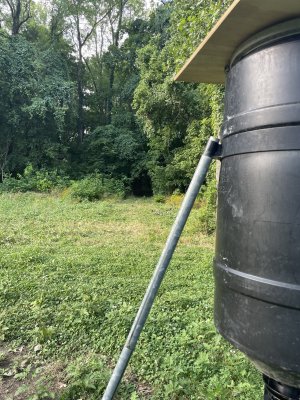-
If you are posting pictures, and they aren't posting in the correct orientation, please flush your browser cache and try again.
Edge
Safari/iOS
Chrome
You are using an out of date browser. It may not display this or other websites correctly.
You should upgrade or use an alternative browser.
You should upgrade or use an alternative browser.
G&H Farms
- Thread starter SwampCat
- Start date
Yes - released itNice one,did they throw it back
It is a remington R-15 in .450 bushmaster. Had it for nearly 20 years. Tried quite a few different calibers for night time hog hunting and the .450 does the best for me. It is a thumper - but hogs can still run off taking several rounds. The .223, 6.5, .300 Blackout class calibers - after the first standing shot - usually leave you wondering if you hit anything. You can shoot a hog pretty good with a 6.5 grendel and not know you hit it. A lot of folks will say - what difference does it make as long as you hit it. I want to know I hit it so I can go on to the next one and not keep shooting at one I have already hit. The .308 is a dang good round, but an AR 10 class rifle is usually pretty dang heavy. I look a lot through my thermal while I am walking up on the hogs. I turn my red light off 100 yards away and shoulder my rifle and look through the thermal to see where I am walking. I like to get fifty yards or closer. The closer you are when you start shooting, the better the chance for multiple kills. Usually pretty easy to get up 50 yards away. I have my hog feeders set up in open areas with cleared lanes where I am in cover until I get fifty yards away. I usually have two lanes of approach, depending on wind. I shoot off a single leg trigger stick - easy to drop when the hogs get running and you need to go to offhand shooting. The only downside the the .450 I have seen is a maximum of seven round mag and the .450 is not a coyote gun - if you choose to hunt yotes. 100 yards and in is what I prefer. I have shot so many hogs for so long, they are almost totally nocturnal on my place. It has been several years since I saw hogs out feeding in daylight.That's a sharp looking rifle!

We seem to have a bumper crop of painted buntings this year. They are very territorial during nesting season. If you are interested in things of nature, the Ibird Pro app can be a lot of fun. These painted buntings will almost fly into the cab of my polaris ranger when I play the alarm call. They will fuzz up like a turkey gobbler

A good companion app to Ibird pro is Merlin - from cornell university - that will identify the songs of birds it “hears”
We remodeled this old house into our hunting camp about ten years ago. It is on the other side of the property from my house. It had a bee hive in this same place when we started remodel. Carpenter wouldnt work until I got rid of them. I have bee hives and intended to save them. Tearing out a bee hive on second floor was bad enough. Getting stung forty times was final straw. I hit them with every wasp spray I had. Bees moved in again six months later and have been going strong ever since

View off back deck of camp - looking out over river bottoms. About half my land down there in those bottoms where nature rules. Hard work can be wiped out at anytime from flooding down there


View off back deck of camp - looking out over river bottoms. About half my land down there in those bottoms where nature rules. Hard work can be wiped out at anytime from flooding down there


Muscadines doing as well as can be. But, coons could strip them tonight. This is a cowart - about the size and color of native muscadine - purple - but much more prolific, thinner skin and sweeter

This is a Fry - bronze scuppernong. Larger in size than the cowart. Not as prolific. Sweeter and thinner skin than native muscadine

This is a smaller green muscadine - about the size of a marble. Thin skinned and sweet. My favorite. Very prolific - almost bunch grape like. Unfortunately, this was a replacement plant for one that died - and I dont know the name

I am not the only one checking on the muscadines
Similar threads
- Replies
- 13
- Views
- 693
- Replies
- 113
- Views
- 10K














